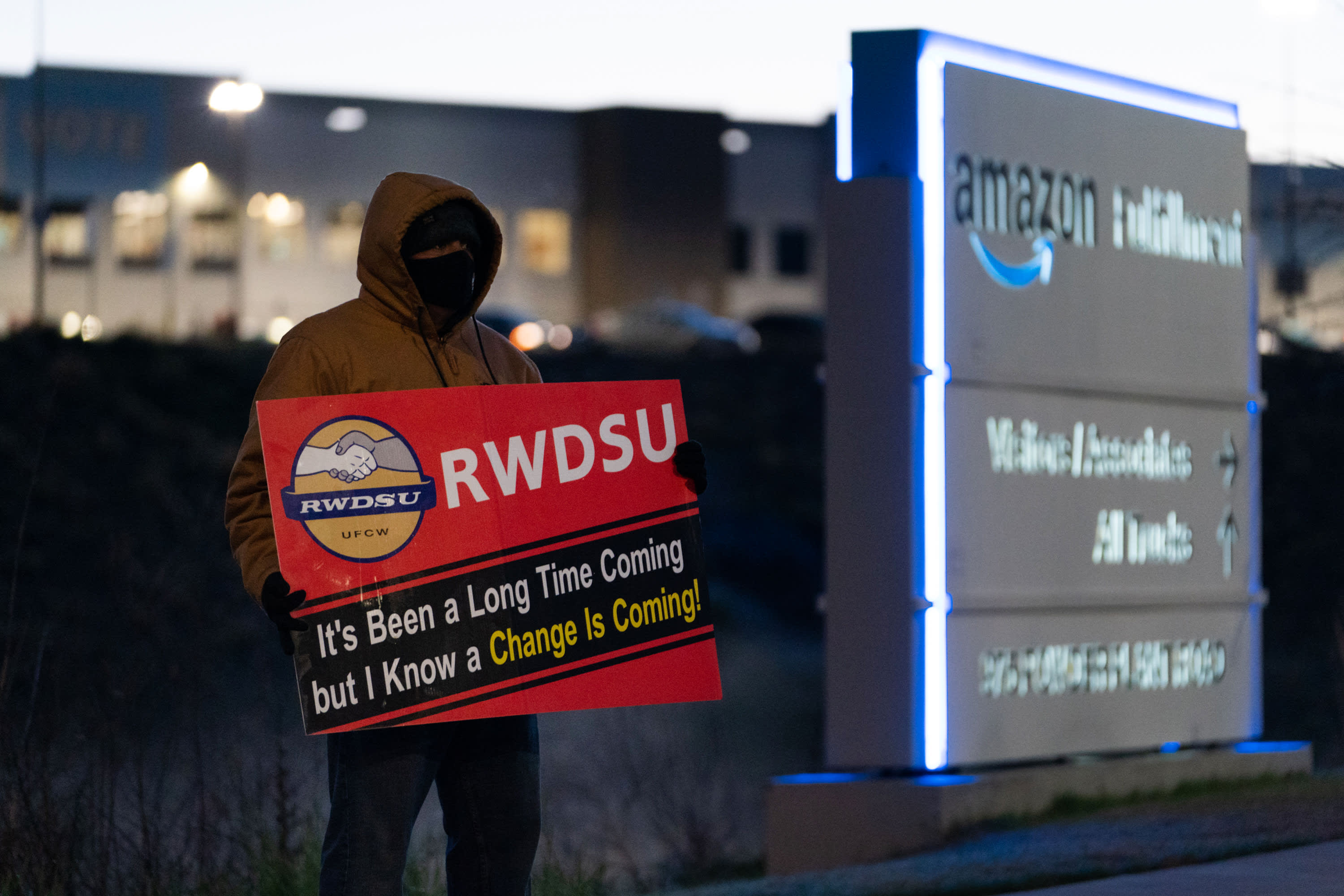Counting began on Thursday in the unionization vote for workers at Amazon’s warehouse in Bessemer, Alabama, culminating months of a hard fought effort to organize one of the e-commerce giant’s U.S. facilities for the first time.
As of early Thursday evening, Amazon was winning the vote by approximately a 2-1 margin. There were still thousands of votes left to count, and the counting process could extend into Friday or later. There were also hundreds of contested ballots, most of which were challenged by Amazon.
Approximately 5,800 workers at the Bessemer warehouse, known as BHM1, were eligible to cast ballots to decide whether to join the Retail, Wholesale and Department Store Union. Roughly 55% of the eligible workers cast ballots in the election.
Even after the votes are counted, the election may be far from over. Further legal challenges could be in store, as either side can file objections to the NLRB over conduct during the election or appeal the ruling to the NLRB board in Washington. Those processes typically involve hearings in front of the NLRB, which would likely draw out the election by many months.
The vote caps off months of intense campaigning by both Amazon and the RWDSU. Last November, workers at the Bessemer facility filed notice to hold a union election. Amazon initially sought to delay the vote and has steadfastly opposed the union via a website, widely distributed flyers and text messages to employees, as well as mandatory meetings, in which it encouraged employees to “vote NO.”
RWDSU organizers were stationed outside the Bessemer facility daily, hoping to catch workers at the end of their shifts to pledge support for the union. By mid-January, more than 3,000 workers at the facility signed cards authorizing the RWDSU to represent them, although some have since left Amazon. Support for the campaign rolled in from out of state, including a critical endorsement from President Joe Biden, who, without naming Amazon, discouraged any employer interference in the election.
For many years, major unions including the Teamsters, the United Food & Commercial Workers Union and the RWDSU have quietly been talking to Amazon workers about organizing. They’ve long faced steep challenges organizing Amazon workers in the U.S., where none of the company’s warehouses are unionized, while unions are common among Amazon’s workforce in Europe.
The last substantial union vote at a U.S. Amazon facility took place at a Delaware warehouse in 2014, when a group of repair technicians voted 21 to 6 against joining the International Association of Machinists and Aerospace Workers.
Amazon’s public profile has grown since then. The company is now the nation’s second largest employer, with 1.2 million employees worldwide. That has attracted attention toward the Bessemer election, along with hopes that the campaign will kickstart organizing efforts across the country amid a yearslong decline in private sector union membership.
Interest in organizing Amazon warehouses accelerated during the coronavirus pandemic. As the virus forced many indoors, front-line workers at Amazon and other companies continued to report to work to provide essential services, shedding a light on warehouse working conditions.
Last Spring, amid surging cases, Amazon warehouse and delivery workers across the country called out a lack of coronavirus safety measures and inadequate sick leave, among other concerns. Some workers staged protests and walkouts, as well as circulated online petitions, which drew more scrutiny against Amazon from lawmakers. Tensions between Amazon and some workers grew further following claims that it unfairly retaliated against and fired employees who were outspoken critics of its labor practices.
BHM1 opened last March, while Amazon was in the midst of a record hiring spree to meet a coronavirus-fueled surge in online orders. Employees in support of the union had expressed a number of concerns about working conditions, such as the breakneck pace of picking, packing and shipping items, in addition to workers not having enough time to use the bathroom.
“We first started to talk about unionizing one day during a break,” Jennifer Bates, a Bessemer warehouse worker who reached out to the RWDSU last summer alongside other coworkers, told a Senate committee last month. “People were upset about the breaks being too short and not having enough time to rest, about being humiliated by having to go through random security checks. Others didn’t like that they never actually spoke to a manager, they just got messages on an app or via text.”
Not all BHM1 workers saw the merits of a union at their facility. During a roundtable hosted by Amazon last month, Ora McClendon, a Bessemer employee, said the union doesn’t align with “what we’re doing here at BHM1.” Other workers who spoke at the roundtable spoke positively about working at Amazon and voiced skepticism about what kind of impact a union would have on their job.
“In my view, my vote is no,” McClendon said. “We don’t need a union here. We’re doing very well, we have the greatest leadership. We work as a team and that’s very important here.”

